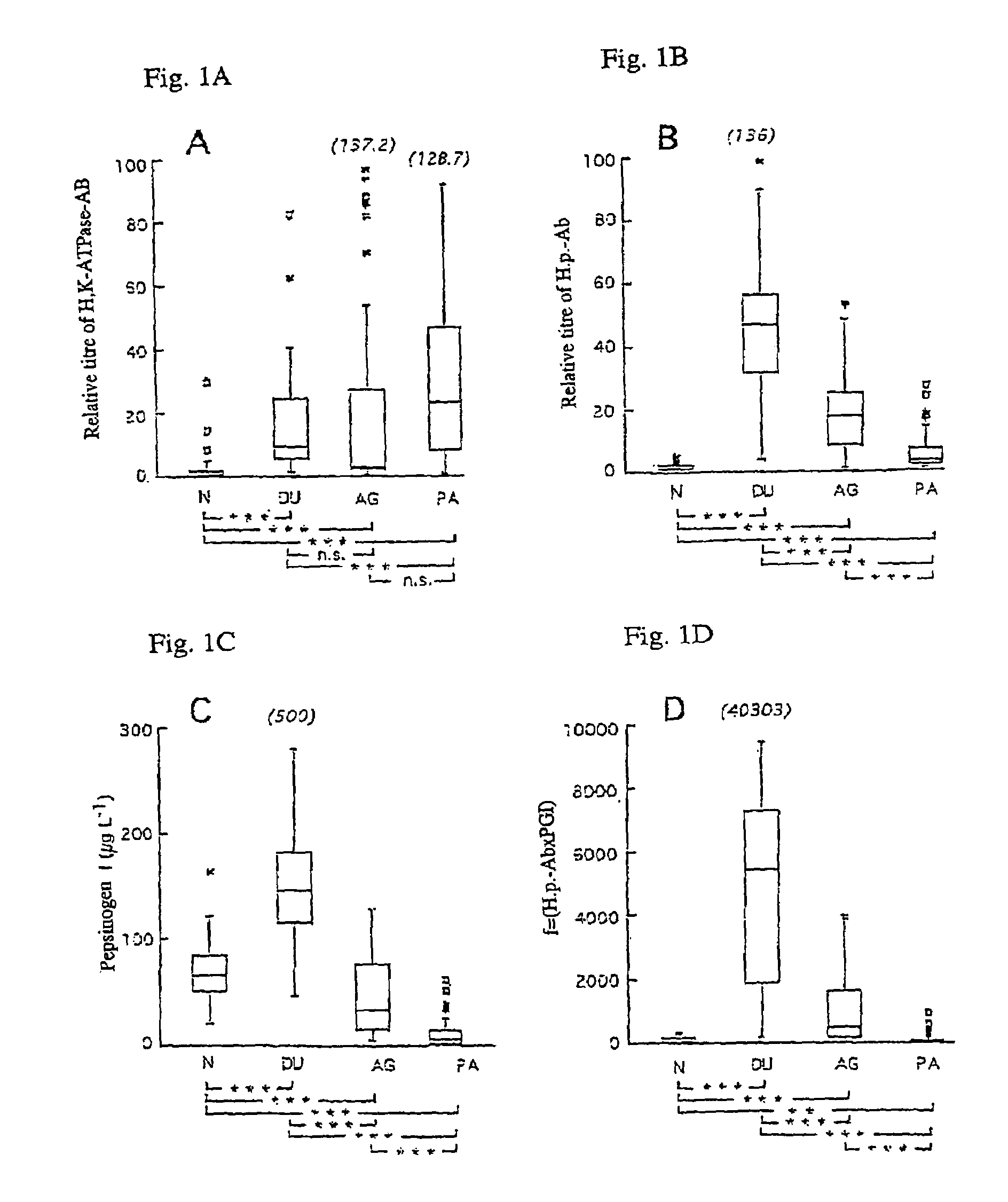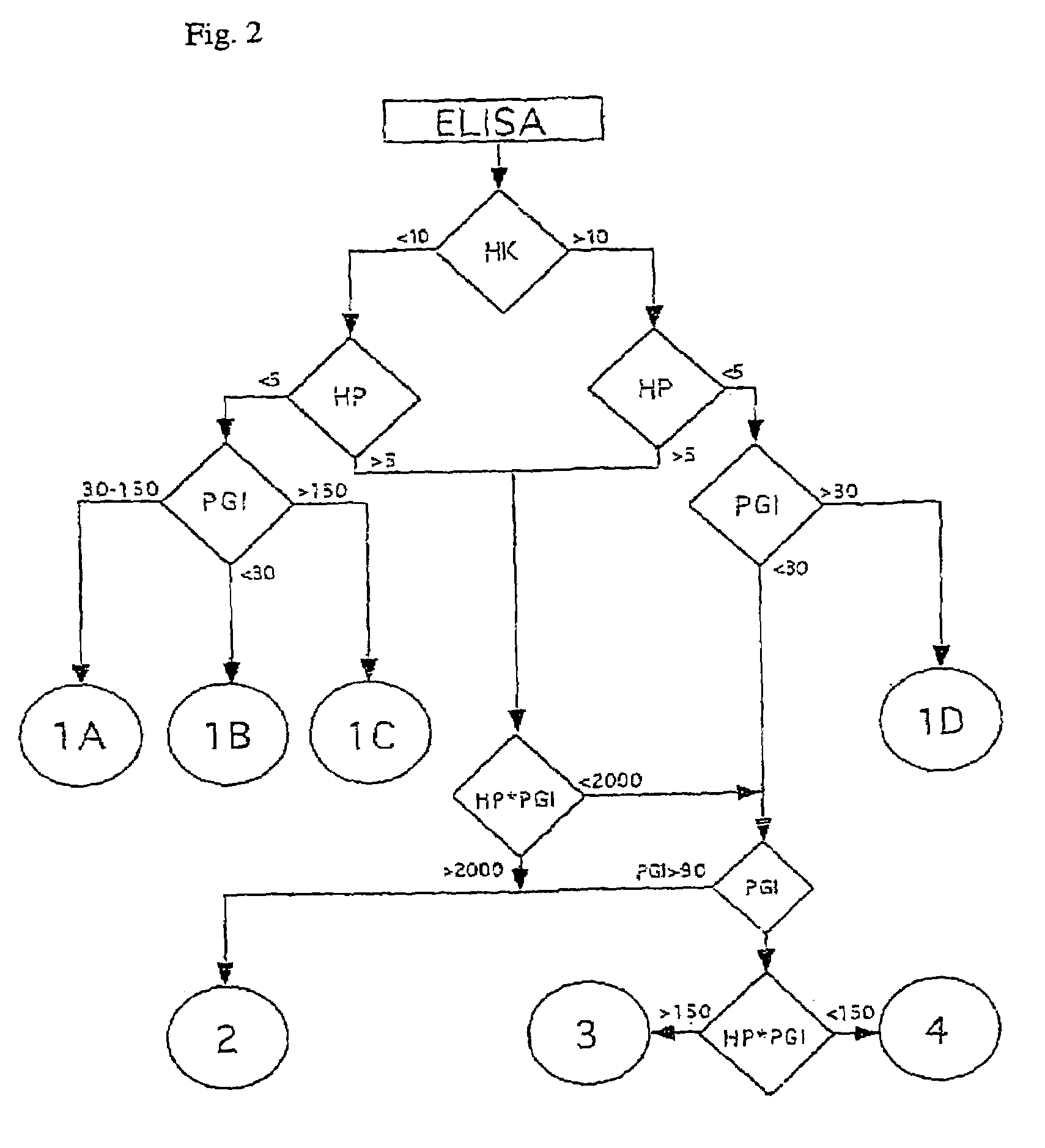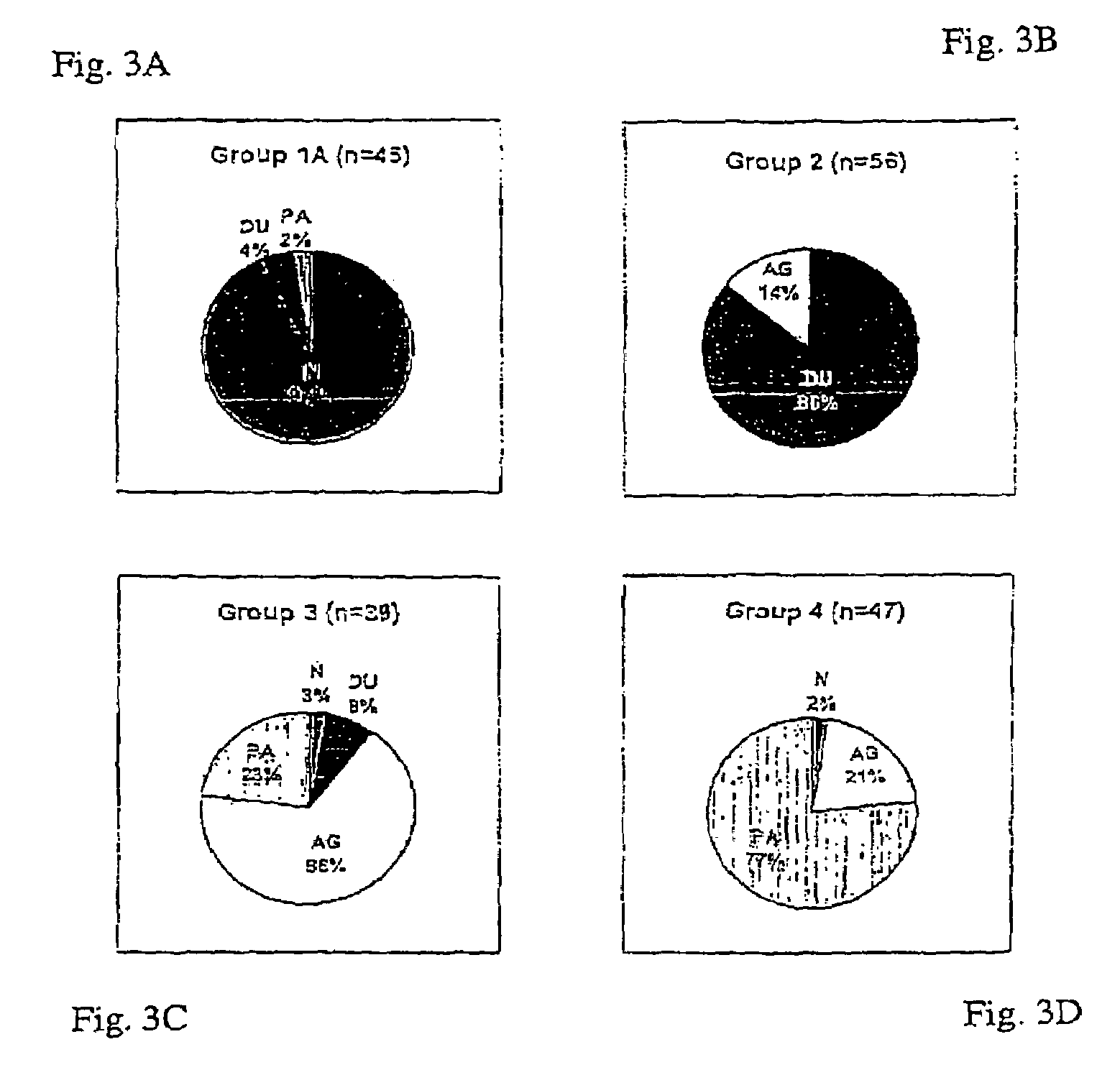Screening method for gastritis
a gastritis and screening method technology, applied in the direction of bacterial antigen ingredients, material testing goods, biochemistry apparatus and processes, etc., can solve the problems of poor management, inconvenient patient care, and difficult diagnosis of gastritis
- Summary
- Abstract
- Description
- Claims
- Application Information
AI Technical Summary
Benefits of technology
Problems solved by technology
Method used
Image
Examples
example 1
[0031]For the initial evaluation of the serologic results, sera from four groups of subjects examined endoscopically and histologically were selected; 50 subjects with normal gastric mucosa (N) (38 males and 12 females, median age 63 years, range 37–80), 53 subjects with acute duodenal ulcer (DU) (39 males and 14 females, median age 52 years, range 20–79), 46 subjects diagnosed as having mild to severe corpus predominant atrophic gastritis (AG) (23 males and 23 females, median age 68 years, range 40–82), and 50 subjects with corpus predominant atrophic gastritis with pernicious anaemia (PA) (23 males and 27 females, median age 68 years, range 40–83). The criteria for the diagnosis of pernicious anaemia which included a Schilling test showing intrinsic factor deficiency have previously been given (Borch, K., et al., Scand J Gastroenterol 1984, 19: 154–60).
example 2
[0032]A sample of 483 subjects (266 males and 217 females, median age 65, range 37 to 85 years) randomly selected from a general population in Sweden was examined with EGD with biopsy and blood sampling. Results of this study have recently been published (Borch, K., et al., Dig Dis Sci, 2000, 45: 1322–29). In biopsy specimens, gastritis was classified according to the Sydney system into antrum predominant-, corpus predominant- and pangastritis with or without atrophy and with or without presence of H. pylori (Price, A., J Gastroenterol Hepatol 1991, 6: 209–22; Dixon, M. F., et al., Am J Surg Pathol 1996, 20: 1161–81). EGD was performed as previously described (Borch, K., et al., Dig Dis Sci, 2000, 45: 1322–29). Three biopsies were taken from the gastric body (major-, anterior-, and posterior aspect), and the antrum within 3 cm of the pylorus.
example 3
Preparation of Antigens
[0033]H,K-ATPase was prepared from pig gastric mucosa as previously described (Mårdh, S., et al., Scand J Gastroenterol 1991, 26: 1089–96). The binding of autoantibodies against the H,K-ATPase in this porcine antigen preparation was similar to that of the human antigen (Song, Y. H., et al., Scand J Gastroenterol 1994, 29: 122–7; Ma, J. Y., et al., Scand J Gastroenterol 1994, 20: 790–4; Karlsson, F. A., et al., Clin exp Immunol 1987, 70:604–10). The vesicular membranes enriched with H,K-ATPase were treated at a low concentration of detergent (0.13% (w / v) of n-octylglucoside, or 0.06% (w / v) of sodium dodecylsulfate) to remove loosely attached proteins, e.g., pepsin / pepsinogen, and then stored at −70° C. in sucrose / Hepes-Tris buffer, pH 7.4. Antigens of H. pylori were prepared from five strains (CCUG 17874, 25, 66, 1139 and 253) as described by Ma et al. (Ma, J. Y., et al., Scand J Gastroenterol 1994, 29: 961–6).
PUM
| Property | Measurement | Unit |
|---|---|---|
| Fraction | aaaaa | aaaaa |
| Fraction | aaaaa | aaaaa |
| Fraction | aaaaa | aaaaa |
Abstract
Description
Claims
Application Information
 Login to View More
Login to View More - R&D
- Intellectual Property
- Life Sciences
- Materials
- Tech Scout
- Unparalleled Data Quality
- Higher Quality Content
- 60% Fewer Hallucinations
Browse by: Latest US Patents, China's latest patents, Technical Efficacy Thesaurus, Application Domain, Technology Topic, Popular Technical Reports.
© 2025 PatSnap. All rights reserved.Legal|Privacy policy|Modern Slavery Act Transparency Statement|Sitemap|About US| Contact US: help@patsnap.com



